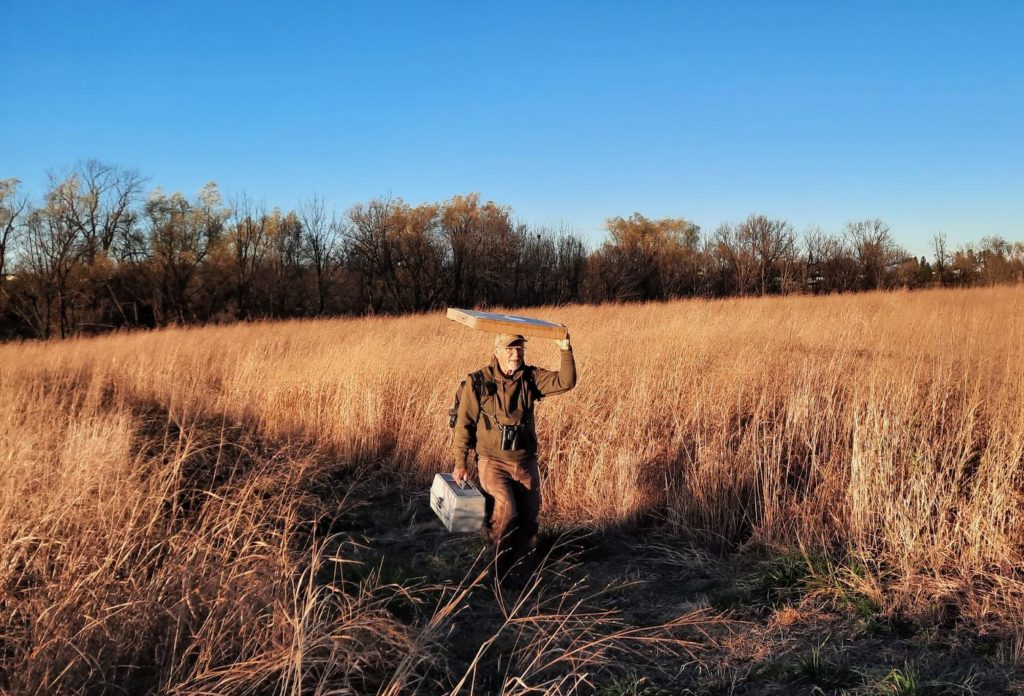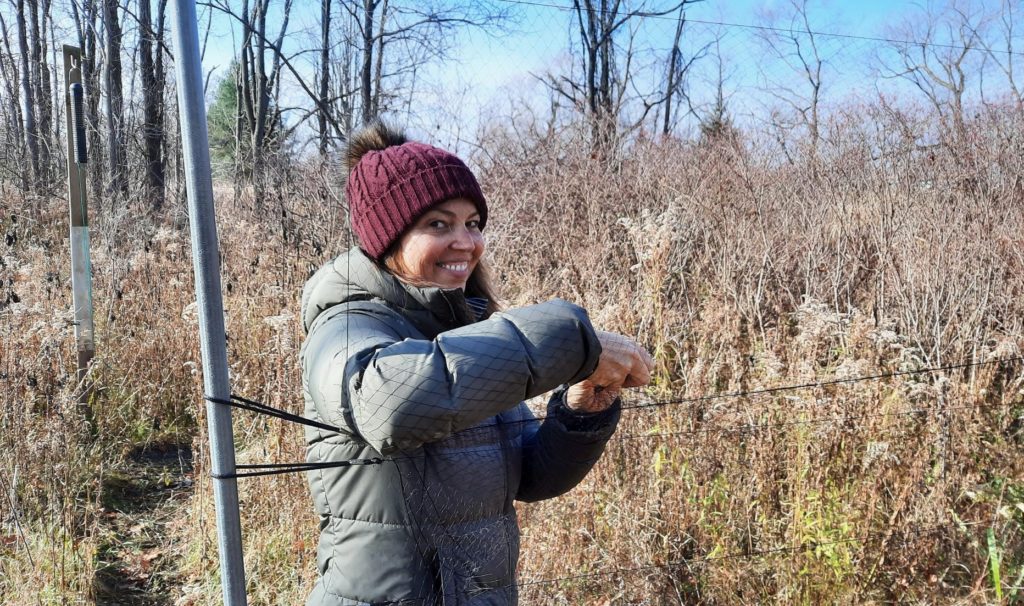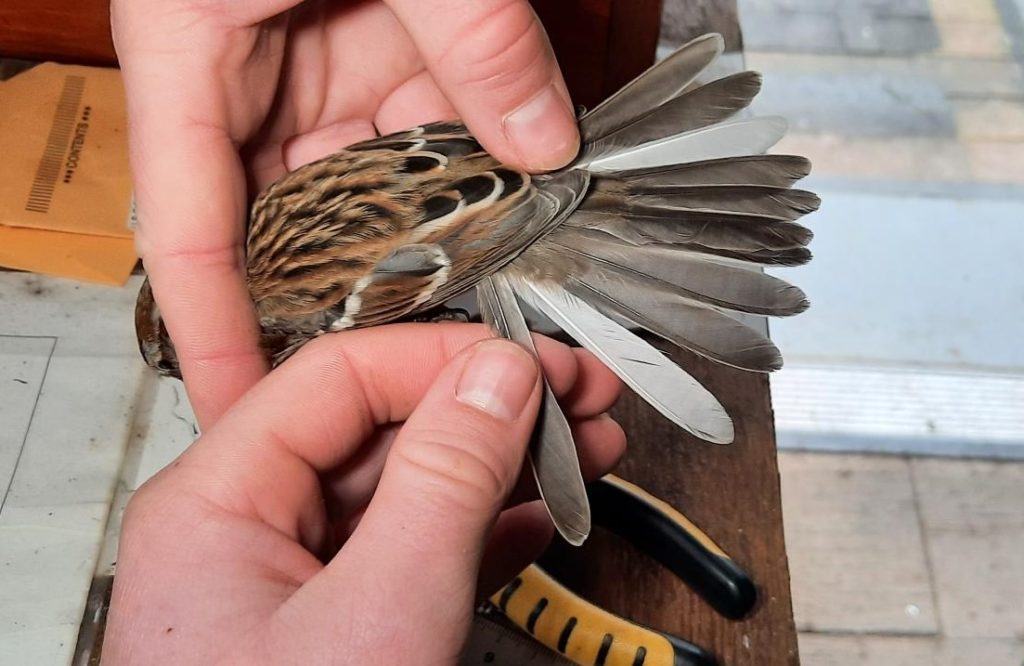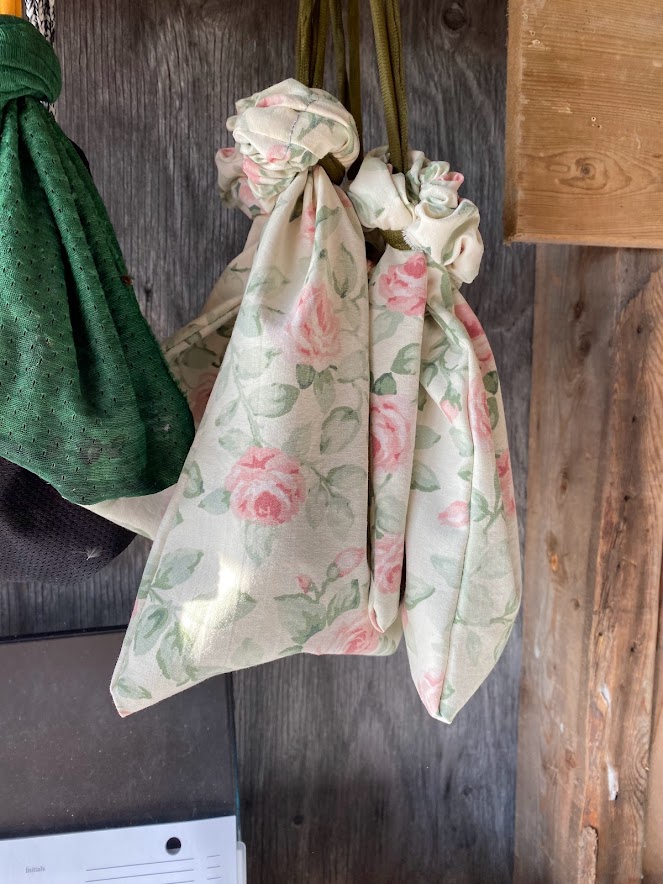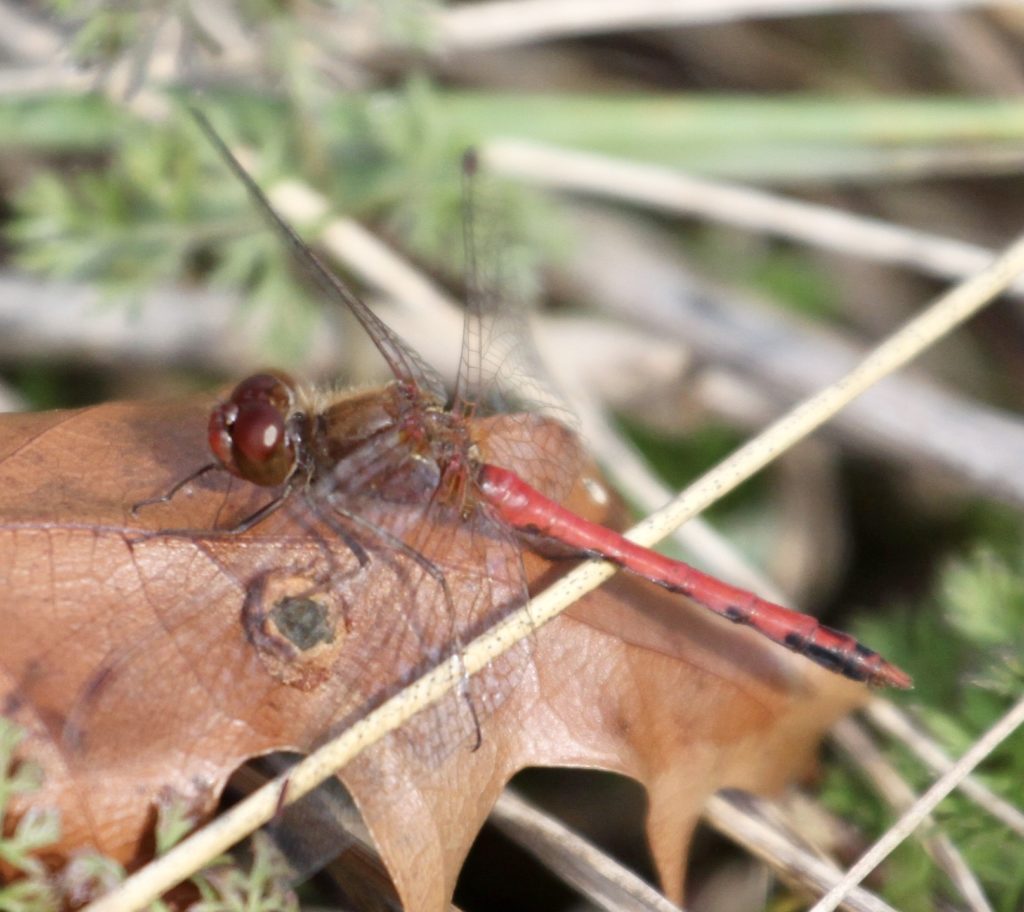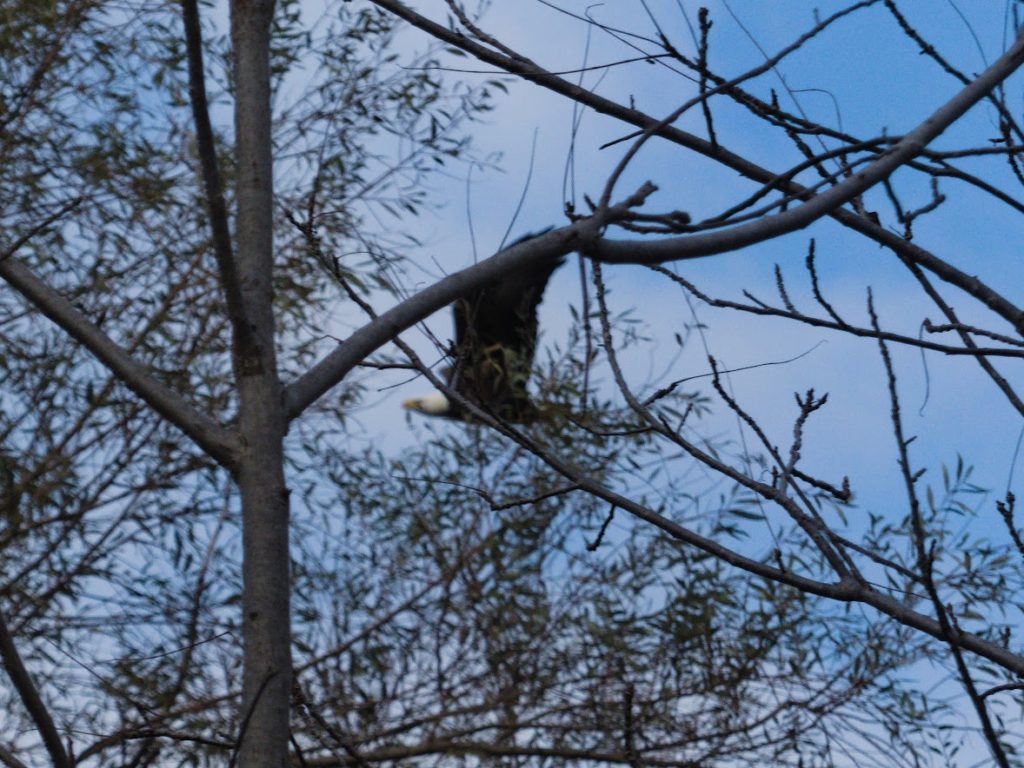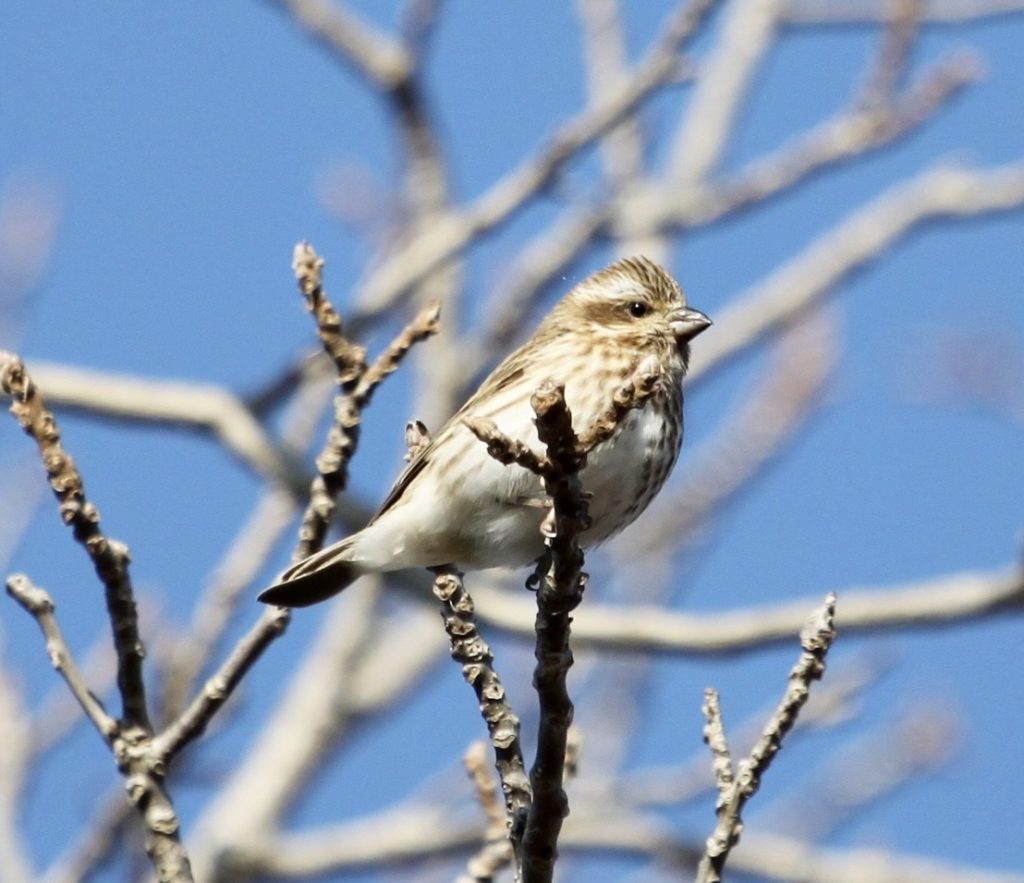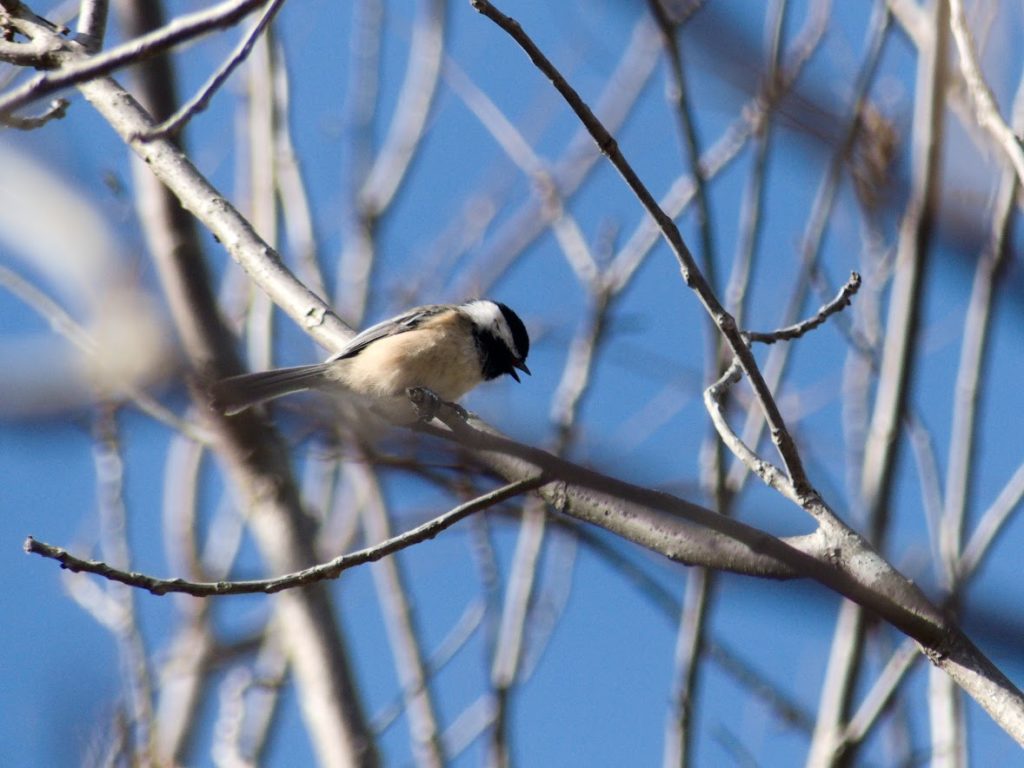“These are the times that try men’s souls.” -Thomas Paine
Although this famous quote is drawn from a completely different context, it is certainly fitting to my current mood. These are the “doldrums”, the time between the end of the Fall banding season and the beginning of the Snow Bunting banding season. But given the impact of climate change on our “Winter” temperatures and precipitation, the advent – even the possibility – of there even being a Snow Bunting season is questionable. But hope springs eternal as they say so, since the end of December, I have been putting out my cut corn bait piles at my banding site close to the York (International) Airport on 9th Line.
I haven’t been optimistic so far as temperatures have been mostly above freezing and there hasn’t been any snow. This should be Winter….but it’s not…and it’s very trying. However, yesterday morning, quite early, I was awoken by the sound of a snow plow running down the street. I peeked outside. C’mon….one, maybe two centimeters of snow. This snow plow driver really wanted some work! I checked the temperature: just above freezing. I was faced with a dilemma: take a look at the bait site or…go back to bed. Amazingly, sloth did not win out. What the hell…..you just never know…although the fact that I hadn’t seen any Horned Larks even near my site was a very bad sign as they usually show up before the buntings and “show” them where the food is.
To my great surprise, upon my arrival I found a flock of about 35 female Snow Buntings spread between the two bait piles!! When I pulled in they took off and headed due west. They didn’t even look back. This was a migratory flock, heading for their wintering area, not a feeding flock that would remain in the area to take advantage of my largesse. I’ve seen this many times before: at the beginning of the season, the birds that initially show up are very “flighty” and are on the move – once they lift off they’re gone. Feeding flocks might leave the site initially when disturbed but will circle around, possibly sit out in the field to see what is going on, and then return to the corn when they feel the coast is clear. But the important thing is that a flock of buntings had returned and had found the food. Wintering flocks range over a wide area. They will store this information away and when/if conditions get more difficult they quite likely will return (unless this is a group that is headed to the midwest).
The big question that intrigues me, though, is how did these birds find these bait piles!? At the time of their arrival the corn would have been under 2 centimeters of snow and, to my eye at least, invisible. Are they able to pick up different wavelengths that would result in their being able to “see” under the snow? Another possibility, and one that appeals to me the most, is that the flock contained an older bird that had been here before and had led the flock to it. Unlikely….but not impossible. Whatever the explanation, these birds had found my bait piles and may do so again. It didn’t look like a random thing either. The piles are about 2 meters apart. When I checked them (the birds had uncovered them to get at the corn), their tracks were all within just a couple of meters of the corn. There was no sign that they had wandered in from a distance. They either saw the corn or knew it was there and dropped in to feed.
I went back this morning. The snow is disappearing, still a bit on the ground. No Snow Buntings. I checked the tracks that were present: crows, rock doves, and some smaller passerines. Later, Marg saw a group of 5 Horned Larks feeding there. Things are heating up…so to speak.
Rick

